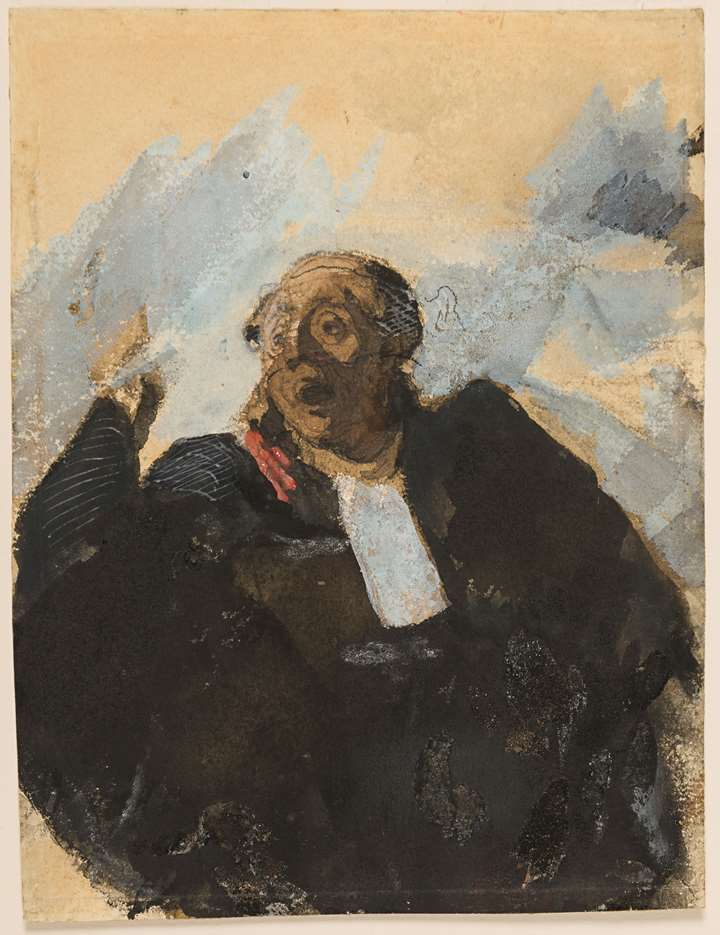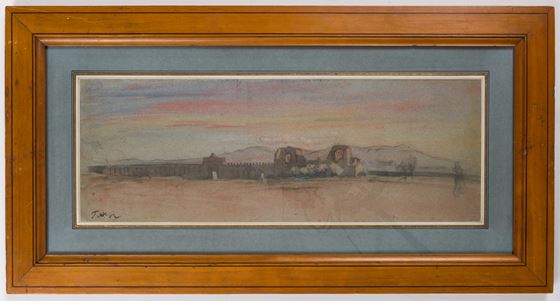Description & Technical information
A splendid and luminous example of Ravier’s watercolour style, the present sheet dates from one of the artist’s visits to Italy in the 1840s. It is typical of his poetic landscapes, in which there is almost always no trace of a human presence. As Ravier noted in a letter written from Rome soon after his arrival there in 1840, his first visits to the countryside beyond the city walls made a deep impression on him: ‘Around three quarters of a mile outside the walls there begins a desert where there is nothing but wild plants and ruins. I walked for an hour without meeting anyone other than a monk who said his breviary…But that which brings to the utmost degree the beauty and sadness of this place, are the ancient tombs in ruins which line the road on both sides at the left and right…It is the landscape which has made the greatest impression on me.’ In the vicinity of Rome, Ravier is known to have visited Ariccia, Subiaco, Cervara, Ostia, Nemi, Anzio, Olevano and elsewhere.
As the Ravier scholar Christine Boyer-Thiollier has noted, ‘The use of watercolours certainly became familiar to the artist during his stay in Rome, for it corresponded perfectly to his aspirations…This method allowed him to rapidly transcribe the golden hues of light or the atmospheric effects of the eternal city, using colours whose dilution rendered them even more transparent…In Rome, ‘outdoor’ artists swarmed over the same old classical sites, which seem to have been ignored by Ravier, for his surviving watercolours show only desolate and lonely places of elegiac beauty. Unfortunately he had left there in the care of an indelicate friend, an entire trunkful of studies and watercolours which have disappeared into thin air. The watercolours which have survived testify to the quality of Ravier’s work.’
This fine watercolour landscape, which may be counted among Ravier’s largest works as a draughtsman, depicts two gates in the southern part of the Aurelian Walls of Rome. The Porta Asinaria, with its two tower blocks, dominates the centre of the composition, while the Porta San Giovanni is at the left. The Porta Asinaria was built between 270 and 273 A.D., at the same time as the Wall itself, while the Porta San Giovanni dates from 1574, when it replaced the older Porta Asinaria, which had become overwhelmed by traffic. To the right of this view, although not depicted by Ravier in the present sheet, is the Basilica of San Giovanni Laterano.
A far more distant watercolour view of the Aurelian Walls is in a private collection in France, while a stylistically comparable watercolour Roman Landscape with a View of St. Peter’sis in the Musée des Beaux-Arts in Reims. Among other drawings by Ravier of sites and monuments in and around Rome is a view of the 16th century Porta Furba and the Acqua Felice aqueduct, drawn in charcoal on blue paper, in the collection of the Maison Ravier in Morestel.
Date: 1840s
Period: 1750-1850, 19th century
Origin: France
Medium: Pen, Brown ink, Watercolour, Pencil underdrawing, Blue paper
Signature: Signed with the artist’s initials FAtR at the lower left.
Dimensions: 19.8 x 54.7 cm (7³/₄ x 21¹/₂ inches)
Provenance: An unidentified collection stamp (not in Lugt), stamped in blue ink on the backing sheet
Galerie Jonas, Paris, in 1975.
Exhibitions: Paris, Galerie Jonas, F. A. Ravier, November 1975, no.60.
Categories: Paintings, Drawings & Prints
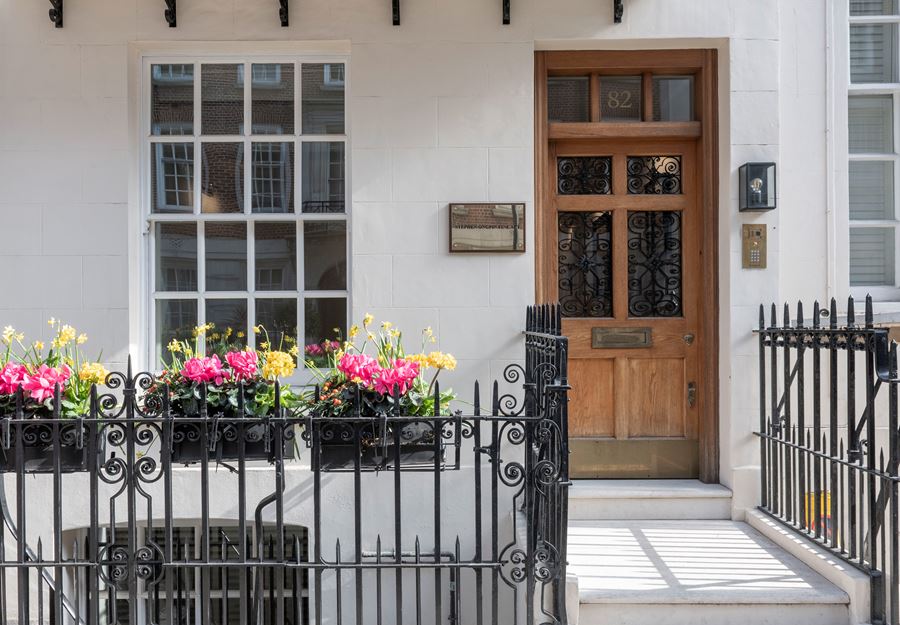
Discover the gallery
Stephen Ongpin Fine Art
Old Master, 19th Century and Modern Drawings, Watercolours and Oil Sketches
More Works From This Gallery
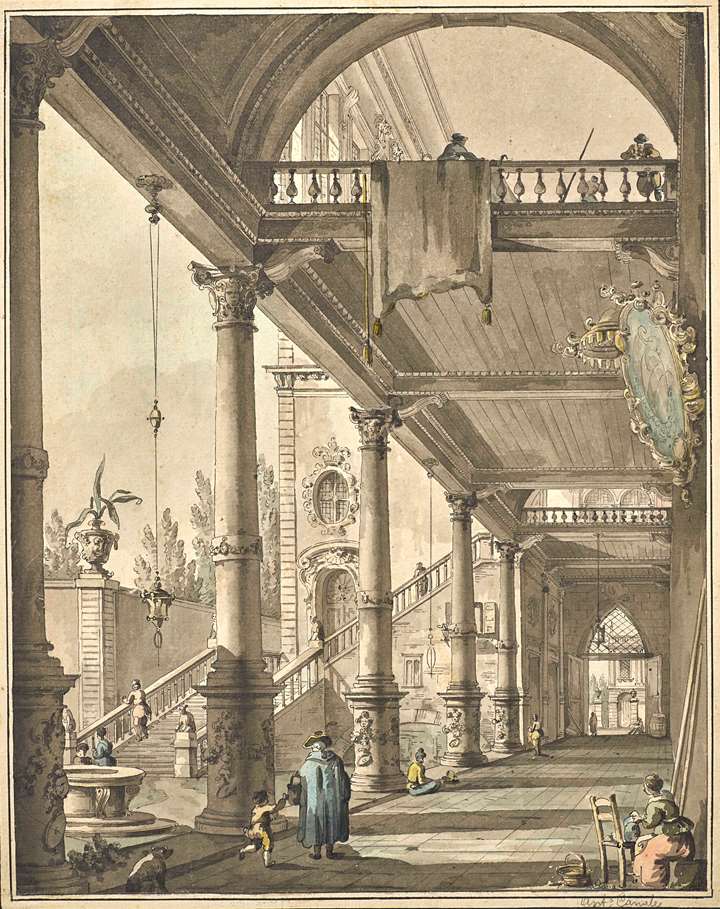
Stephen Ongpin Fine Art
A Capriccio of a Colonnade Opening onto a Courtyard of a Palace
Giovanni Antonio Canal, CANALETTO (Venice, 1697 - Venice, 1768)

Stephen Ongpin Fine Art
Portrait of a Prisoner, Looking Down to the Right
Jean-Pierre LAURENS (Paris, 1875 - Fontenay-aux-Roses, 1932)
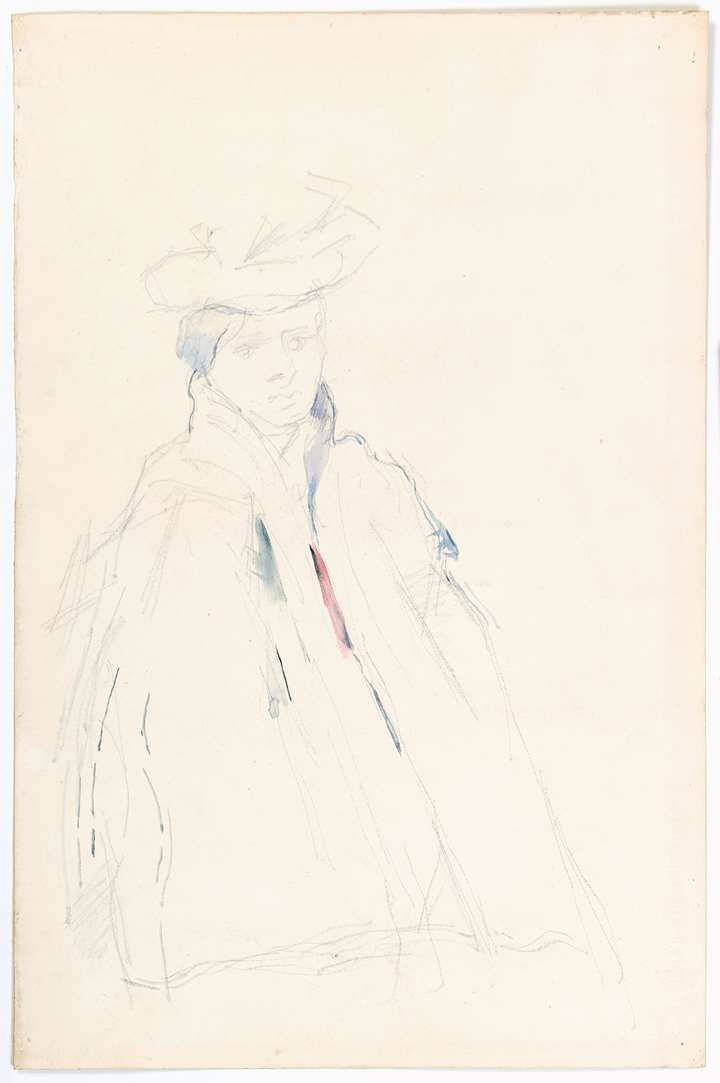
Stephen Ongpin Fine Art
Femme à la mante
Paul CEZANNE (Aix-en-Provence, 1839 - Aix-en-Provence, 1906)
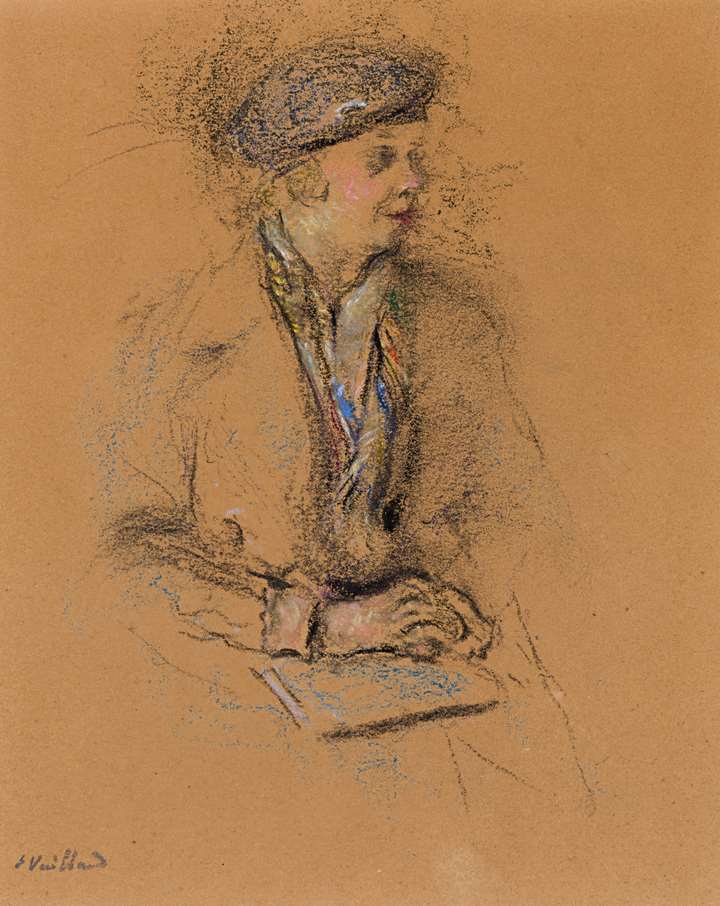
Stephen Ongpin Fine Art
A Woman Wearing a Beret
Edouard VUILLARD (Cuiseaux, 1868 - La Baule, 1940)

Stephen Ongpin Fine Art
Ridge Gourds, Bitter Gourd
Brigid EDWARDS (London, 1940)
